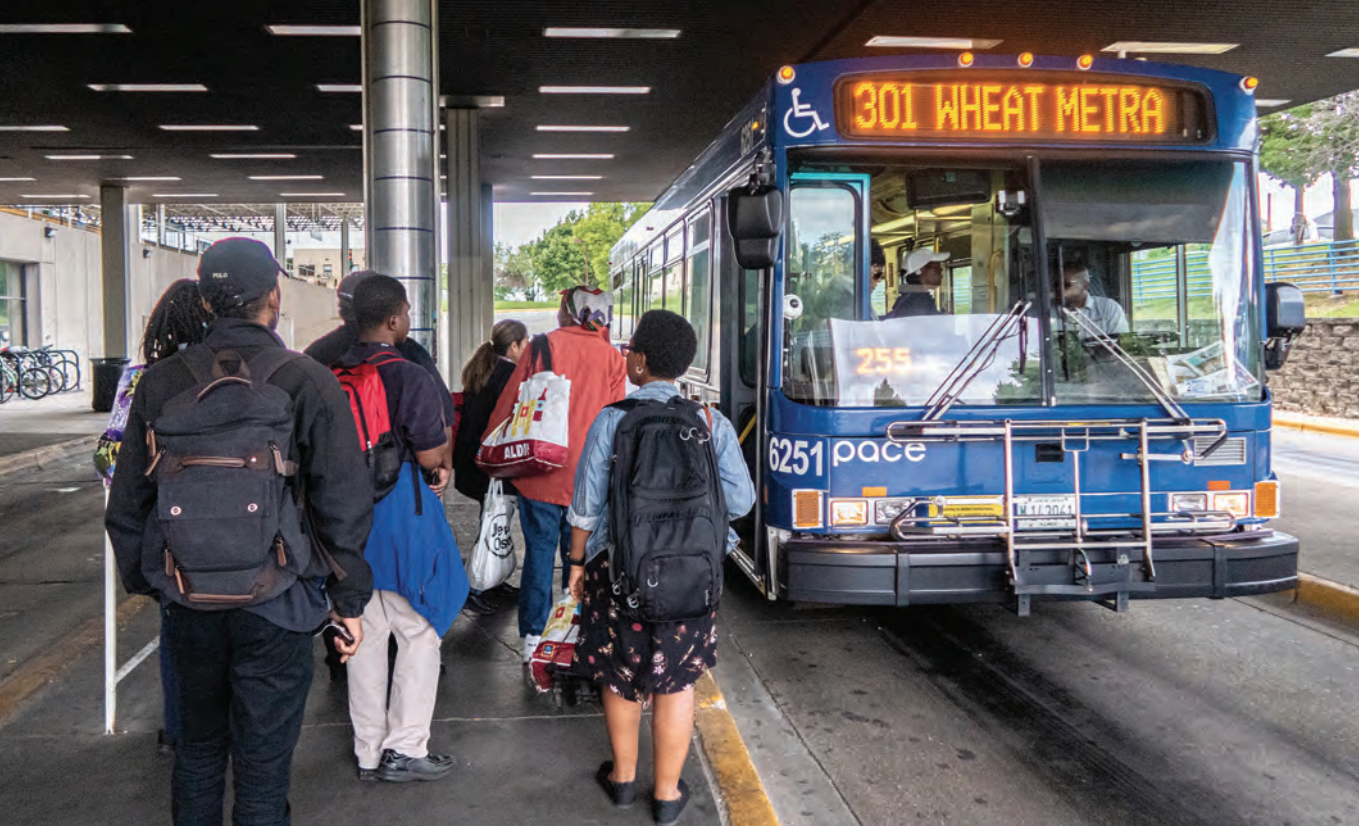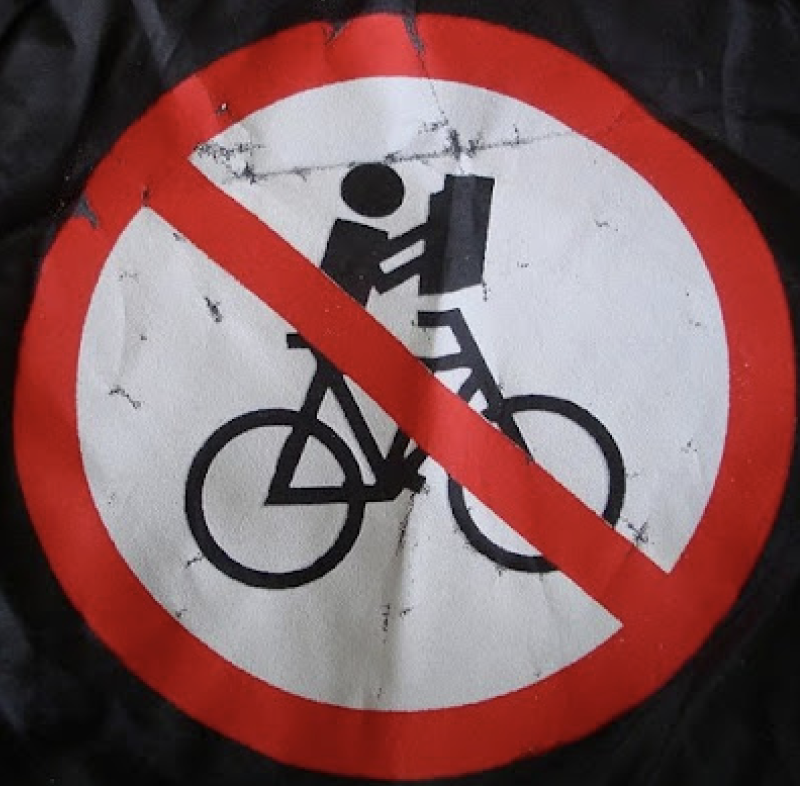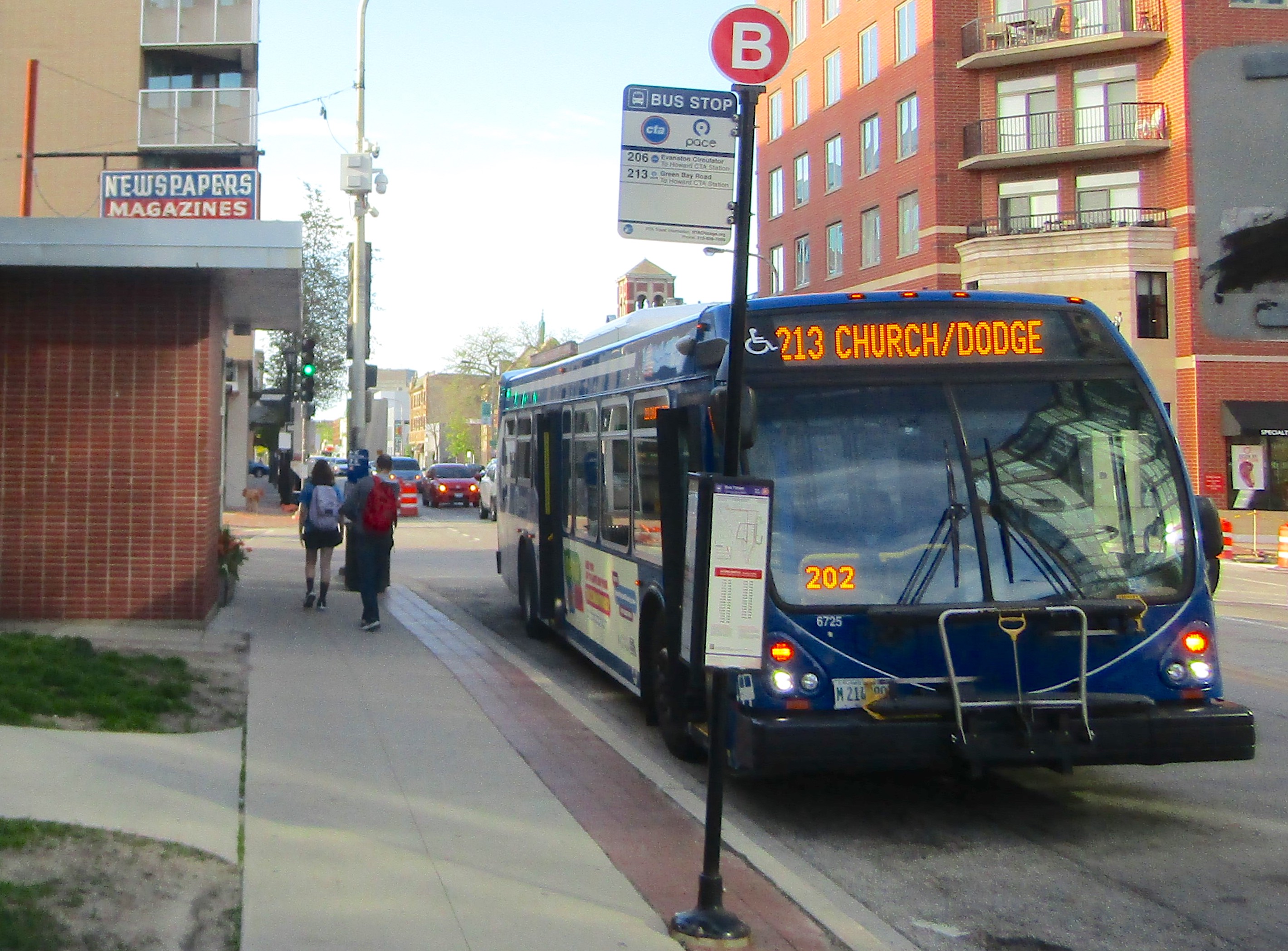Here are the best things about Active Trans’ “Fair Fares” recommendations
4:50 PM CST on December 9, 2019

As it stands, it’s cheaper to buy a month of parking at many Metra stations than it is to buy a pass that let’s you ride Pace to and from the station. Active Trans wants to change that. Photo: Active Trans

Streetsblog Chicago published a brief introduction to the "Fair Fares" report last month; writer Courtney Cobbs took a closer look at the study for this post.
The Active Transportation Alliance recently released "Fair Fares Chicagoland," a report with policy recommendations to make the region's transit system more equitable for lower-income residents. Chicago could join other cities like New York City, Denver, Seattle, San Francisco, and Portland that have implemented a reduced fare program.
The seven policy recommendations outlined in the report are:
- Creating a discounted fare program
- Reassessing the farebox recovery ration (state law currently requires the transit agencies to fund 50 percent of their operations costs through fares; it may be necessary to change this policy to accommodate reduced fares)
- Integrate fare collection to encourage transfers between CTA, Pace, and Metra
- Test the South Cook [Metra Electric and Rock Island] Fair Transit Pilot, which would increase frequency and lower fares on these South Side lines
- Decriminalize fare evasion and offer alternatives to fines such as community service plus enrollment in a reduced-fare transit program
- Implement fare capping, so that those who can’t pay the cost of a pass upfront won’t be penalized by paying a higher total
- Free fares for youth under age 19 who qualify for free or reduced lunch programs
I'm going discuss the strategies I'm most excited about: creating a reduced fare program, integrated fare collection, fare evasion decriminalization (which I'll explored further in a separate article) and free fares for youth. To be clear, I think all the recommendations are great and need to be implemented to help create a more equitable transit system.
First, let's look at why these policy recommendations make sense. Lower-income Chicagoland residents are more likely to use public transportation than those with higher incomes. Lower-income folks are also more likely to struggle to pay for transit. These financial difficulties have a ripple effect: medical appointments are missed, social connections are negatively impacted, and barriers to employment arise due to the inability to pay fares. People earning $25,000 or less surveyed by Active Trans (60 percent of respondents) reported they would ride public transit more often if fares were lower. Making transit more affordable increases equity by reducing transportation costs, increasing access to medical care, employment, goods and services, and social connections.
Under Active Trans' proposal, individuals making up to 200 percent of the federal poverty level, or $24,980, would be eligible for reduced fares. Therefore people working full time at the current Chicago minimum wage of $12 an hour (the statewide minimum wage is $8.25) would qualify for the discount. This is the same eligibility rule used by peer cities offering reduced fares based on income.
According to the Active Trans report, a 50-percent fare reduction would save lower-income Chicagoland residents between $630 and $1,650 a year, based on the current full-price CTA, Pace, and Metra fares. As it stands, reduced fares are offered to people with disabilities, seniors, students, and military personnel.
Integrating fares is another way to improve equity. Currently a full-price combined CTA and Pace monthly pass is $105; a reduced-fee monthly pass is $50. Some people buy $28 weekly passes because they can't afford to pay for a monthly pass upfront. As it stands, there is no reduced-fare option for weekly passes. The fact that people end up paying more overall by buying weekly passes as they go -- $1,456 for a year of weekly passes versus $1,260 for a year of monthly passes -- is one reason why Active Trans recommends fare capping. For folks who rely exclusively on Pace service, a monthly pass is $60.
The Active Trans report notes that there are currently there exist two options for residents in surrounding counties to transfer between the three systems: the Metra Link-Up Pass and the PlusBus Pass. The Link-Up has a restrictive schedule for CTA use, roughly during typical commuting hours, but no limits for Pace use. The PlusBus allows for unlimited Pace rides in conjunction with their Metra travel. Importantly, these two passes are only available after you purchase a monthly Metra pass. Currently Metra monthly passes range from $116 to over $200, depending on how long your commute is. Active Trans recommends that CTA, Pace, and Metra lower the price of the the Link-Up Pass and PlusBus passes, evaluate how to better integrate the passes, and “offer a less restrictive schedule for their usage in order to incentivize ridership.”
Ninety percent of the transit rides I take in a given year are on CTA so it was news to me that Metra and Pace offered these passes. I thought it was great that Active Trans pointed out a PlusBus pass, $30 a month, is more expensive than monthly parking passes at many suburban Metra stations. For example, a parking permit in Itasca for non-residents is $75 for three months. According to Active Trans, “this pricing structure creates a disincentive for commuters of all income levels to use Pace to access Metra.”
Lastly, I'm excited by the prospect of free fares for youth. Active Trans is recommending free fares for Chicago youth who quality for free or reduced lunch. Free fares for youth will help the budgets of many lower-income families. There are also social and cultural implications of free youth fares. I agree with many of the folks advocating for free fares for youth that this has the potential to open up our city to youth who live in segregated and disinvested parts of the city. By making it easier for youth to ride transit, we can encourage a new generation to value public transit. I want to live in a city that offers people of all income levels, ages, and abilities the ability to travel around the city easily without having to own a car or being burdened by transportation costs.
If you're interested in learning more, especially about how these recommendations can be funded, check out the report. I certainly learned a lot from the study and I'm grateful for all the hard work that went into it. (Streetsblog Chicago writer Lynda Lopez and Active Trans advocacy manager Julia Gerasimenko were co-authors.) Fair fares, more frequent, faster service, increased accessibility, and increased service hours are a recipe for a transit system that works for and attracts more Chicagoland residents and visitors. What recommendations stood out to you and why?
Stay in touch
Sign up for our free newsletter
More from Streetsblog Chicago
Since COVID, Pace ridership has fared better on major corridors and in north, northwest suburbs than in south, west ‘burbs
The suburban bus system's top five busiest routes largely maintained their ridership rankings.
Due to incredible support from readers like you, we’ve surpassed our 2023-24 fundraising goal
Once again, the generosity of walk/bike/transit boosters is fueling our reporting and advocacy.



